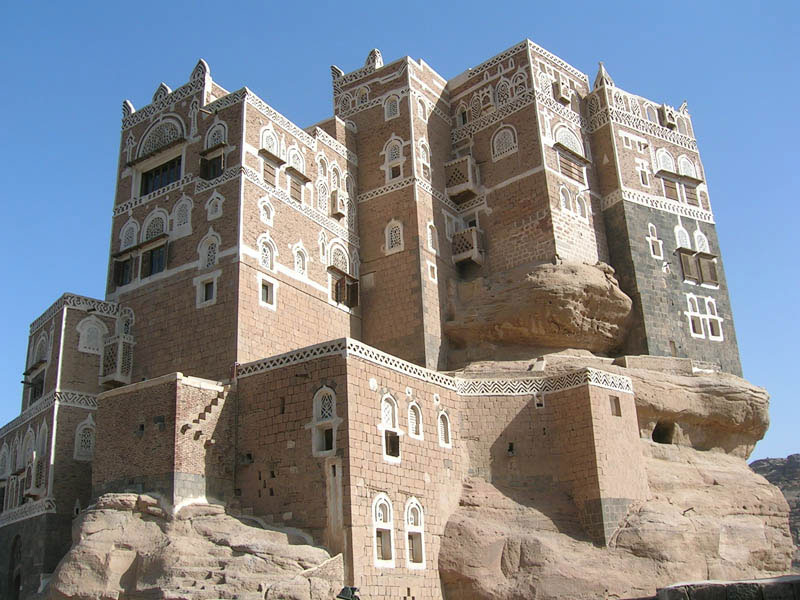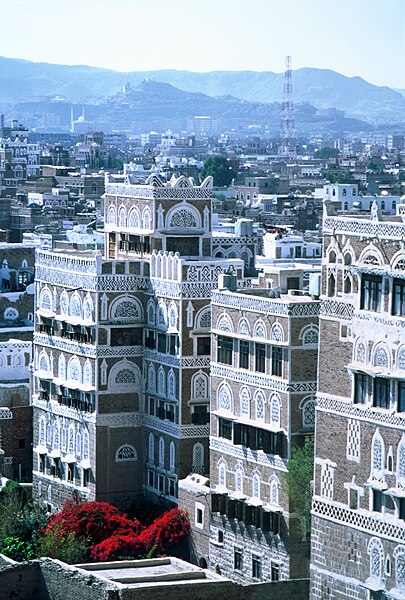
Sana'a is one of the oldest continuously inhabited cities in the world. At an altitude of 2,300 metres it is also one of the highest capital cities in the world. Sana'a has a population of approximately 1,748,000 (2010) making it Yemen's largest city. The old city of Sana'a, a UNESCO World Heritage Site, has a distinctive visual character due its unique architectural characteristics, most notably expressed in its multi-story buildings decorated with geometric patterns.
The old fortified city has been inhabited for more than 2,500 years and contains a wealth of intact architectural gems. It was declared a World Heritage Site by the United Nations in 1986. Efforts are underway to preserve some of the oldest buildings, some of which, such the Samsarh and the Great Mosque of Sana'a, are more than 1400 years old. Surrounded by ancient clay walls which stand 9–14 metres high, the old city contains more than 100 mosques, 12 hammams (baths) and 6,500 houses.
Many of the houses resemble ancient skyscrapers, reaching several storeys high and topped with flat roofs. They are decorated with elaborate friezes and intricately carved frames and stained-glass windows.
One of the most popular attractions is Suq al-Milh (Salt Market), where it is possible to buy not only salt but also bread, spices, raisins, cotton, copper, pottery, silverware, and antiques. The majestic 7th-century Jami' al-Kabir (Great Mosque) is one of the oldest in the Muslim world. The Bāb al-Yaman (Yemen Gate) is an iconized entry point through the city walls and is more than 1000 years old.
A commercial area of the old city is Al Madina, where development is proceeding rapidly. In addition to three large hotels, there are numerous stores and restaurants. The area also contains three parks and the President's palace.
"La budda min Ṣanʻāʼ" (Sana'a must be seen) are famous words first attributed to Imam Muḥammad ibn Idris al-Shafiʼi (768-820) who visited the ancient capital several times.
Many travellers in ancient days were impressed by the beauty of Sana'a. The well-known Yemeni geographer and historian al Hamdani marveled at the cleanliness of the city:
“ The least dwelling there has a well or two, a garden and long cesspits separate from each other, empty of ordure, without smell or evil odors, because of the hard concrete (adobe and Cob probably) and fine pastureland and clean places to walk. ”
The Persian traveller Ibn Rustah, a contemporary of al-Hamdani, noted its food:
“ It is the city of Yemen - there not being found ... a city greater, more populous or more prosperous, of nobler origin or more delicious food than it... ”









the Great Mosque of Sana'a








Salt Market , Suq al-Milh



The Bāb al-Yaman (Yemen Gate)



The majestic 7th-century Jami' al-Kabir







0 comments:
Post a Comment